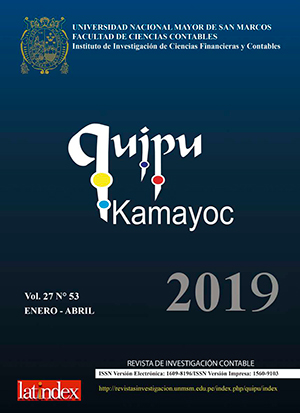Relational capital and innovative capacity
DOI:
https://doi.org/10.15381/quipu.v27i53.15992Keywords:
Relational capital, knowledge, innovation, innovative capacityAbstract
The study addresses the importance of relational capital and innovative capacity, sources of competitive advantage. Relational capital represents the knowledge incorporated to the company as a result of its external relations with customers, suppliers, competitors, alliances, among others, thus allowing to generate new knowledge that turns out to be superior, because it is a product of the combination of the company's knowledge of its operating environment which favors innovation since knowledge is an essential resource. Innovation is conceived as a dynamic process, through which activities are carried out linking the outside world and capacities to take advantage of knowledge with the purpose of improving results and achieving a competitive advantage. The innovative capacity represents the ability of the company, which, through new innovative ways takes into account the resources of the market and its own. It enables the company to create new products, processes or new ways of organization and marketing, responding this way to the changing environments. Knowledge is essential to generate innovative capacity and relational capital. It is strategic because it facilitates the exchange of knowledge.
Downloads
Downloads
Published
Issue
Section
License
Copyright (c) 2019 María Isabel Alejandra Quevedo Alejos

This work is licensed under a Creative Commons Attribution-NonCommercial-ShareAlike 4.0 International License.
AUTHORS RETAIN THEIR RIGHTS:
a. Authors retain their trade mark rights and patent, and also on any process or procedure described in the article.
b. Authors retain their right to share, copy, distribute, perform and publicly communicate their article (eg, to place their article in an institutional repository or publish it in a book), with an acknowledgment of its initial publication in Quipukamayoc .
c. Authors retain theirs right to make a subsequent publication of their work, to use the article or any part thereof (eg a compilation of his papers, lecture notes, thesis, or a book), always indicating the source of publication (the originator of the work, journal, volume, number and date).






